One thing which we all need to agree on is that we never read the terms and conditions when we come across them. Whether we download an audio file or app or register on any website, we should mark the checkbox —I have Read and Agree to Terms and Conditions— and go for it even without reading a bit.
We do so because the content comprises many pages, and we do not waste time reading it. But to what extent do you think skipping the terms and conditions is advisable? I think we need to be at least aware of what it has.
It does not mean we need to spend and waste our time on it, but we have ways to get a summary of terms and conditions, and I will let you know how to get that in this article.
Websites to know Summary of Terms and Conditions
There are a few websites that summarize the terms and conditions for us. These websites do not show you the entire terms and services but will summarize and let you know the necessary conditions we want.
- Terms Of Service Didn’t Read
- TOSback.org
- Clickwrapped: Gives Grades to Websites
- Getterms.io: Generate Privacy Policy
- Terms and Conditions Checker: Chrome Extension
So, let us get into the list of those websites.
1] Terms Of Service Didn’t Read
To get what is present in terms and conditions, tosdr.org is the best website. It summarizes what is present in terms and conditions and lists the essential points you need to know. By default, it shows you the summarized form of the terms or conditions of primary online services.
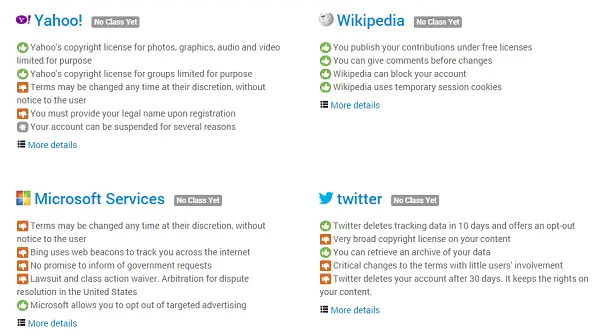
You can even get it as the browser extension for Mozilla Firefox, Google Chrome, Opera, and Safari for free. With the extension, you can get a summary of the terms and conditions of any website you visit. Install the extension and quickly get an idea of the terms or conditions of a particular website you visited.
2] TOSback.org
Knowing the summary of terms and conditions is not enough. We even need to know what changes are being made to it. So, TOSback.org, with the collaboration of the Electronic Frontier Foundation and tosdr.org, lets you find the difference in versions of terms of service. TOSback keeps an eye on websites and will update you when their terms and conditions change.
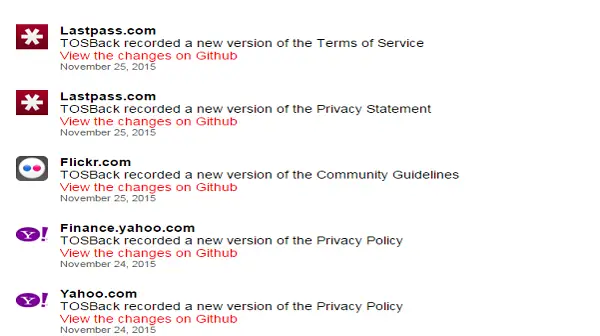
With just a click, you can track changes in terms and conditions just like you monitor changes in files. This is a valuable tool for many of us.
3] Clickwrapped: Gives Grades to Websites
Social Networking Websites, Photo Sharing Websites, and other Search Engines have their terms and conditions and privacy policies. Every user may not be aware of what those are and what those websites do with the content, photos, or any of our stuff it has. Clickwrapped does it the way we want.
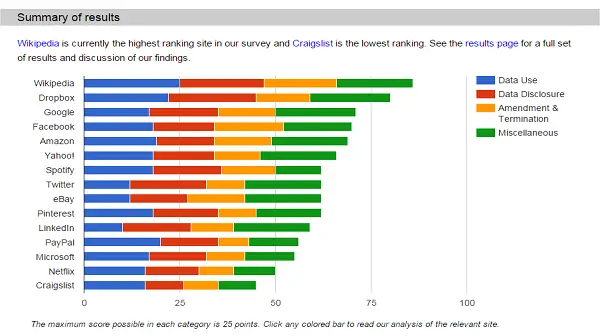
It grades and ranks websites based on the terms of service and privacy policies. It ranks websites based on how one website gives respect to user rights.
4] Getterms.io: Generate Privacy Policy
If you are starting a website and want to have terms and conditions on your own, then the getterms.io website comes in handy. You can get terms of service from a lawyer, but giving a try with this website will let you know what privacy policy should look like, and it is the better way to start with.
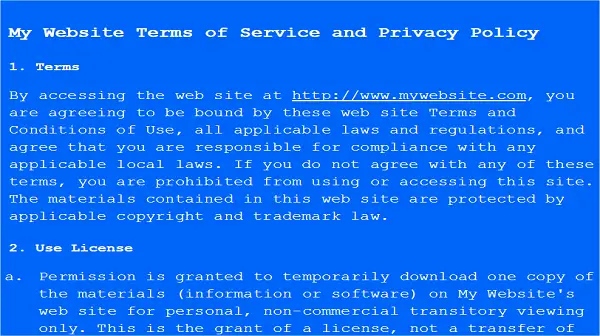
Just type your location and company name, and it generates the privacy policy, which is generic and advisable. It is free to use and has the required license. You will get to know what is meant by clean terms and conditions.
5] Terms and Conditions Checker: Chrome Extension
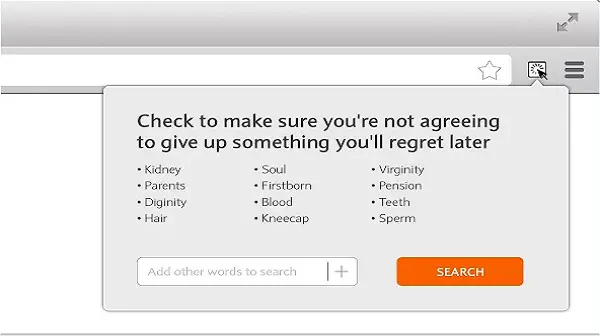
Terms and Conditions Checker Chrome Extension will let you know what terms of service are associated with your visited website. It even highlights the important points you need to be aware of before accepting its terms of service. This is a handy extension to get an idea of the terms of service before accepting them.
These five websites provide a summary of terms of conditions, helping you know what to agree on and what not to agree on.
What is the importance of terms and conditions?
Terms and conditions are essential because they help to protect both the customer and the company. They set out the rules and regulations to which the customer must agree to use the company’s products or services. This includes acceptable use policies, liability limitations, and dispute resolution procedures. Having these things in place helps to avoid misunderstandings and potential legal problems.
How do you write a summary of a contract?
To summarize a contract, first, identify the key provisions. Then explain those provisions in plain language, highlighting the main points of the agreement. Include any essential deadlines or details relevant to the reader. Finally, conclude with a brief overview.